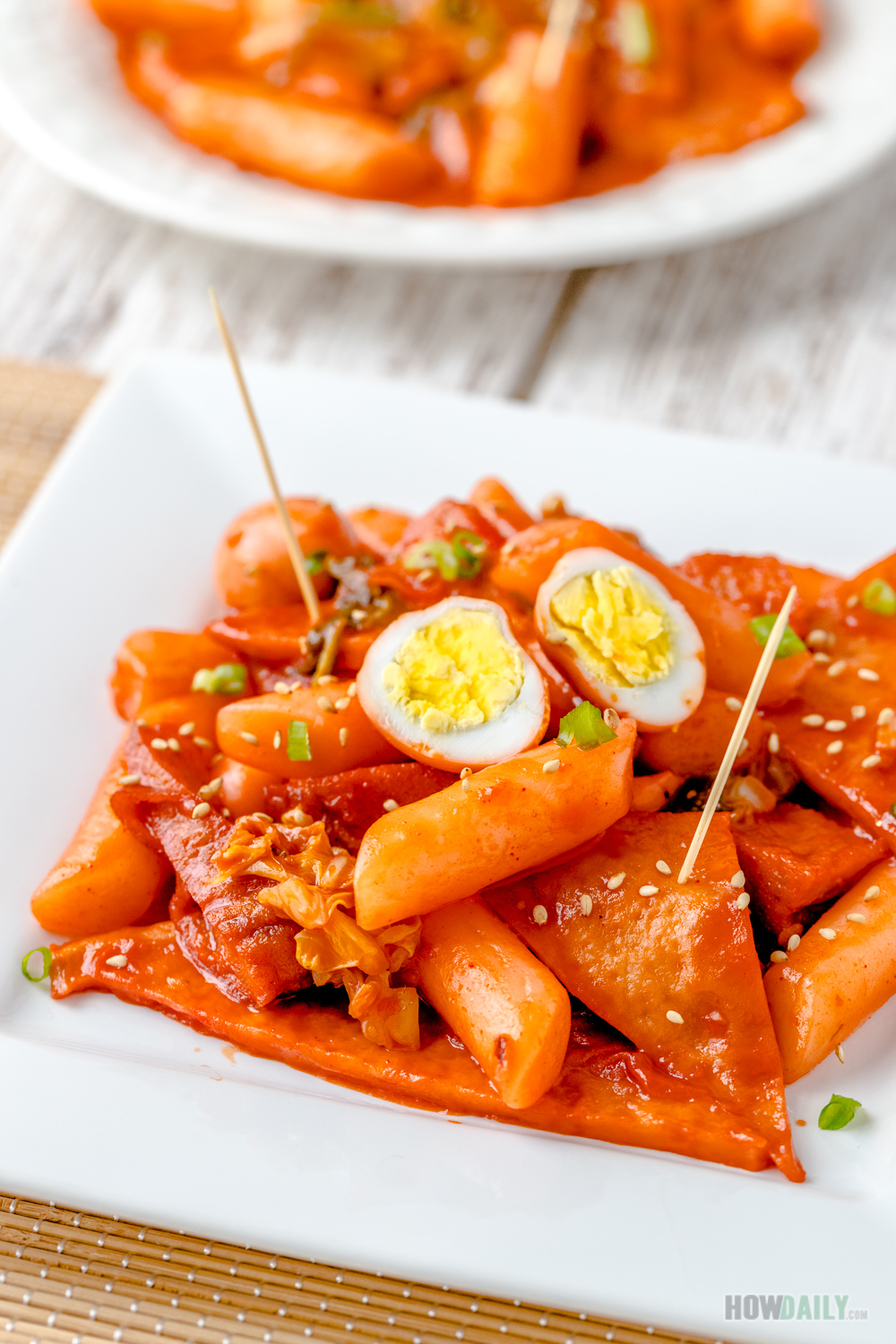Recipe for Spicy Korean Tteok-bokki
Your folders
Your folders
Prep Time: 15 minutes
Cook Time: 20 minutes
Total: 35 minutes
Servings: 2
Cost: $19.05 /serving
Author : Victoria

Ingredients
Export 15 ingredients for grocery delivery
Instructions
Step 1
In a large pot, fill 6 cups of water. Soak dried kelp in this water for at least an hour or overnight.
Step 2
When ready, turn heat to low-medium and bring this pot (with kelp inside) to boil.
Step 3
Keep boiling for about 10 minutes, remove the (now) enlarged kelp.
Step 4
Lightly rinse dried anchovies (or dried shrimp, skip if use bonito flakes). Add this umami ingredient to the water pot.
Step 5
Chop off the root, and throw the white parts of the scallion into the pot as well.
Step 6
Make sure heat is on low, simmering with cover for 40 minutes. Keep a small piece of folded paper towel between the lid and pot to avoid overflowing.
Step 7
When done, strained through a sieve, discard the solid.
Step 8
Let the liquid cool down, divide into portions, and store in the freezer for subsequent uses. This will be your Korean soup stock, can be used for Tteokbokki, noodle, etc..
Step 9
Hard boil the quail eggs or eggs. Then remove shells.
Step 10
Wash, rinse and separate all rice cakes.
Step 11
Take about 3 cups of the Korean stock above and add to a pot or deep sauce pan over medium heat.
Step 12
Add rice cakes and bring to boil.
Step 13
Stir in all the sauce seasoning: gochujang, soy sauce, sugar, minced garlic, and ginger.
Step 14
Lightly wash to remove extra oil from the fish cakes, cut into smaller pieces then add to boiling soup pot.
Step 15
Add the hard-boiled quail eggs to pot also. Add those optional ingredients if use (extra chili flakes, cabbage).
Step 16
When the rice cakes are fully cooked and soften, turn heat to low and keep simmering to thicken the sauce.
Step 17
Chop scallion and then add them as well as sesame oil to the pot. Stir to fully mixed.
Step 18
Serve tteokbokki warm with some roasted sesame sprinkle on top.